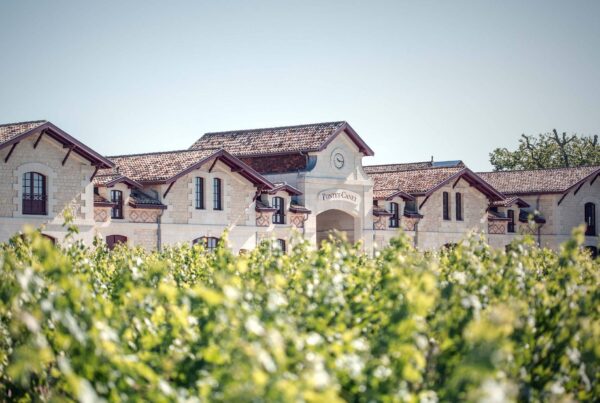Print and read offline instead.
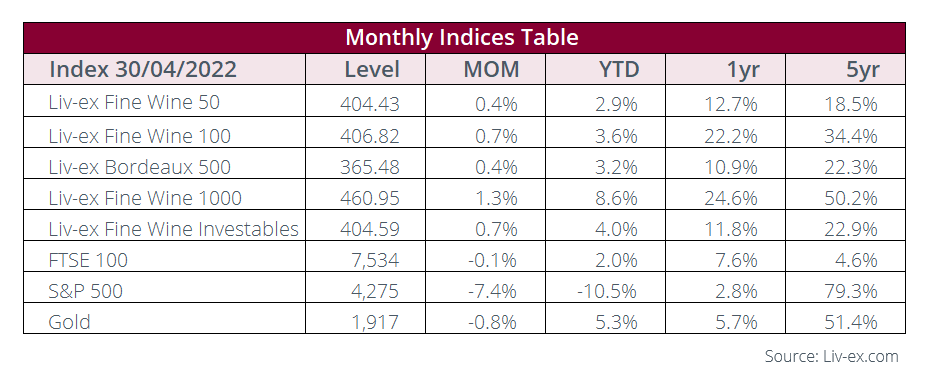
Bordeaux and Burgundy prices rise at the expense of market share in April
April was a short but packed month for the wine trade, with Easter holidays, trade fairs like Vinitaly and En Primeur tastings in Bordeaux.
Fine wine prices continued their ascent to record levels, but the pace of growth slowed. The Liv-ex 100 index rose 0.7% in April, the same increase as in March. The Liv-ex 1000 went up 1.3% but, unlike in recent months, more regional sub-indices declined than rose. The Burgundy 150 and the Bordeaux Legends 40 were the best performers, up 3.5% and 1.6% respectively.
Although Bordeaux and Burgundy prices rose the most, the two regions lost trade share compared to March. Bordeaux took 33.2% of the market by value, while Burgundy fell to 22.6%. Meanwhile, Piedmont (6.5%) and the USA (8.4%) enjoyed the most significant increases in their monthly share.
Scarecrow Cabernet Sauvignon 2019 not only led US trade but went on to become the most active wine by value in April. It boasts 100-points from Lisa Perrotti-Brown MW who was writing for The Wine Advocate at the time. Also from the 2019 vintage but from Bordeaux, Chateau d’Armailhac led monthly trade by volume.
Top performing wines from Champagne and Bordeaux

Liquid wines like vintage Champagne and ‘on’ vintage Bordeaux were among the biggest risers in the Liv-ex 100 index in April.
Taittinger Comtes de Champagne Rosé 2007, awarded 99-points by James Suckling and 97-points by Antonio Galloni (Vinous), rose 9.8%. The 2008 Blanc de Blancs from the Champagne house also moved up 4.7% in value. Both wines have traded at all-time highs this year.
The 2000 vintage of Château Mouton Rothschild, which has been its most active vintage in the past year, rose 5.4% in April. Its Mid-Price now surpasses £20,000 per case. The special bottle, which is adorned with an image of the ‘Augsburg Ram’, has seen its Market Price increase 13-fold since release.
Mouton Rothschild 2000 trades on Liv-ex
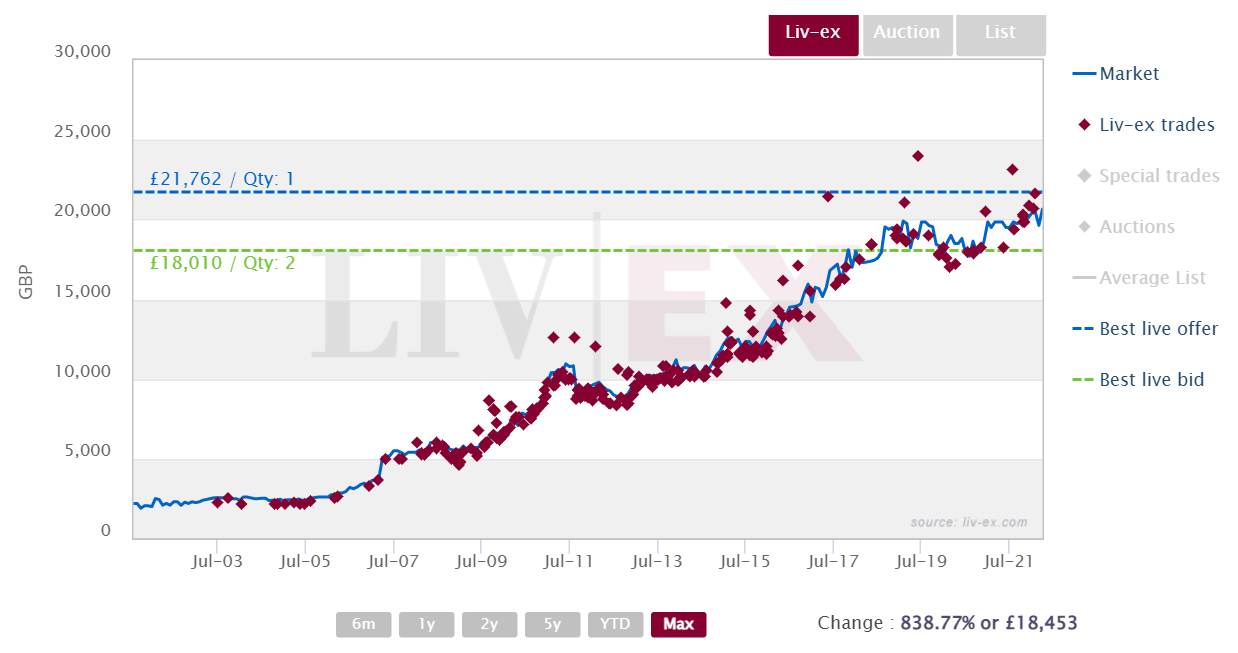
The secondary market for magnum bottles
Magnums regularly make it into the rankings of the top traded wines, like Louis Roederer Cristal 2008 which traded last week and Scarecrow Cabernet Sauvignon 2019 at the end of April. They usually command a significant price premium to 75ml bottles too.
The market for magnum bottles looks rather different to the one for normal size bottles, which are produced in greater numbers and naturally make up the majority of trade.
Of all the magnum trades on Liv-ex over the past year, Champagne accounts for the most at 21.5%. Bordeaux, which leads trade for normal size bottles, comes in second for magnums (18.4%), followed by Burgundy (17.8%).
At 11.2%, the Rhône stands out as the next major source for magnums. By contrast, the region consistently maintains a trade share of under 5% when also considering 75cl bottles.
Other regions that do not feature much in the secondary market are much more prominent when looking at demand for magnums. They include: Castilla y Leon (2.4%), Provence (0.9%), Loire (0.5%) and Beaujolais (0.5%).
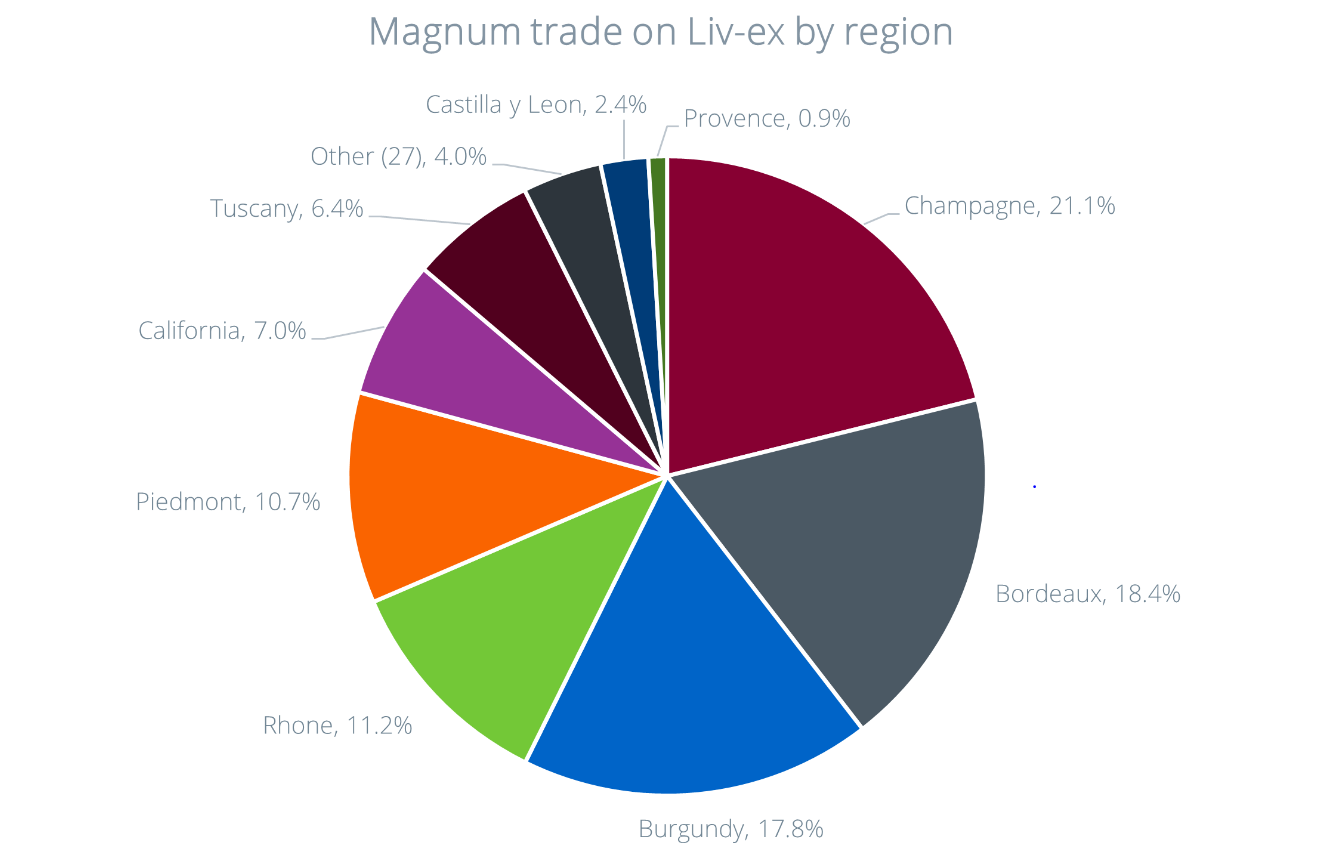
*as a percentage of total magnum trade by volume.
Industry news
New releases from Henschke
For the first time, one of Australia’s leading producers, Henschke, released four single-vineyard Shiraz wines from the Eden Valley together. The international release from the 2017 vintage included Hill of Grace, Hill of Roses, Mount Edelstone and The Wheelwright. According to Decanter, the wines were offered at the same time to ‘highlight differences in terroir and vine age’.
Port houses to release limited editions from the 2020 vintage
Several Port houses have announced that they will release limited edition bottles from the historically small 2020 vintage. The Symington family is releasing Graham’s 2020 Bicentenary Edition Vintage Port and Warre’s 2020 Vinhas Velhas 350th Anniversary Edition Vintage Port. Taylor’s is also bottling a Single Quinta Vintage Port from its Vargellas wine estate. The vintage will stay in the cellar and will be released at a later date, ‘thus satisfying the future demand for Single Quinta Vintage Ports,’ according to Adrian Bridge, managing director at the Fladgate Partnership.
Tokaj faces crisis with retiring workers
Tokaj producers are facing a looming crisis as highly-skilled grape pickers approach retirement age. The average age of a picker in Hungary’s famous sweet wine region is 60 years-old and there is ‘no one to replace them’, according to the Drinks Business. Istva Balassa of Balassa Wine said that ‘it’s very hard to find people who know how to do it and what they’re looking for’. Producers are now taking steps to integrate and teach younger pickers, but wage and the climatic realities in the region are on-going areas of concern.
Neal Martin examines ‘new chapter’ at Haut-Bailly

Neal Martin wrote a retrospective on Château Haut-Bailly for Vinous last month. The estate opened its new winery in late April, which Martin said ‘coincides with a new chapter at Haut-Bailly’.
The tasting covered the 2000-2019 vintages, with some older supplementary vintages dating back to the 1960s.
Martin noted the ‘misconception’ that older vintages cannot match up against their more modern counterparts, singling out the ‘magnificent’ 1964 and ‘stunningly complex’ 1966.
From more modern vintages he noted the leap forward in quality that happened with the 2008 vintage, and the evenly matched pairings of the 2009-2010 and 2015-2016 vintages – his preference being for the latter in each instance (by a nose).
He was also impressed by the 2017 and 2018 but the top score went to the recently bottled 2019 which he called ‘Fabulous with a capital “F”’.
First impressions of Bordeaux 2021
The En Primeur tastings are over and the first critical scores and reports are emerging. At the beginning of May Jean-Marc Quarin, the Wine Advocate and JancisRobinson.com all released their impressions of the Bordeaux 2021 vintage.
The Wine Advocate’s report was compiled by William Kelley in his new role as Bordeaux reviewer. He took over from Lisa Perrotti-Brown MW who left the journal in December last year.
Top marks for Ausone
The aforementioned critics appear to concur that the new vintage is not ‘great’ but they have emphasized numerous positives nonetheless.
Quarin said that it was, ‘an average vintage from which emerge a few good, very good or even excellent exceptions’.
He added that the ‘most successful 2021s are highly pleasurable’, due to their aromatics, soft tannins, acidity and low alcohol.
Kelley stressed the similarities between the 2021s and certain vintages from the 1980s and 1990s. It was, he said, a vintage that crossed the ‘balance and style’ of wines from these previous decades with ‘all the agronomic progress and savoir-faire of the present’.
Indeed, he thought that if the 2021 vintage had happened 30 years ago it would be considered ‘superb’.
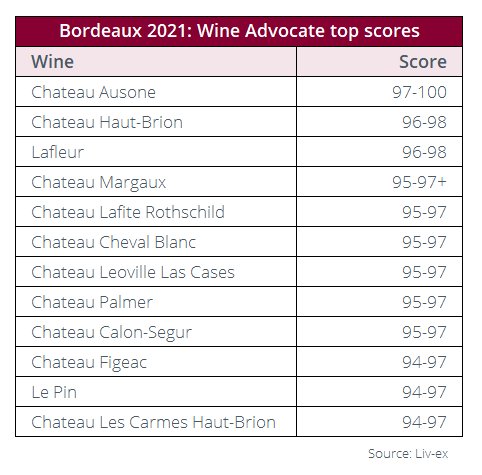
Examining some of the top-scored wines from both critics, there are several similarities. Château Ausone, for example, received the top score from both Quarin and Kelley.
Kelley said it was a contender for ‘wine of the vintage’ and a ‘profound young Ausone’.
Lafleur, Château Lafite Rothschild, Château Margaux, Château Cheval Blanc and Château Les Carmes Haut-Brion were other wines which made their top selections.
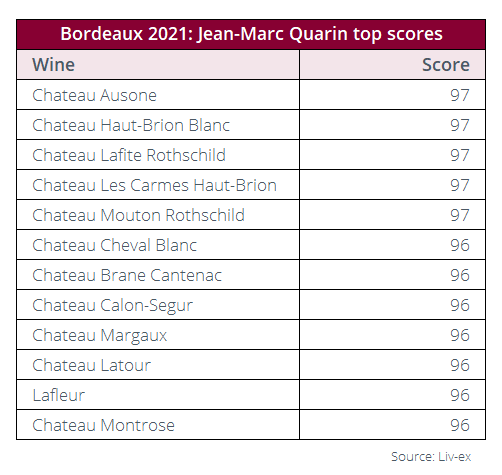
Both also had criticisms of the vintage. They both talked of it being a heterogenous year, with mildew and dilution a problem across the region.
Hollow mid-palates and short finishes were also among the problems they identified, as well as what Kelley called ‘bloody, ferric, metallic aromas and flavours’ caused by these mildew problems.
Robinson praises the whites
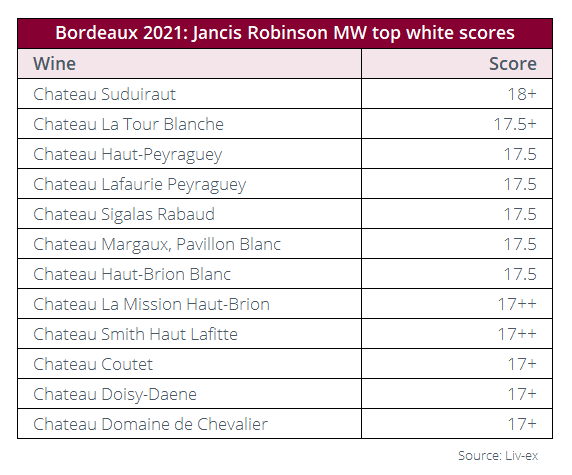
All of the critics were noticeably vocal about the quality of the white wines this year as well. Quarin scored Château Haut-Brion’s blanc 97-points, while Kelley said that as a group they are the ‘finest set of dry whites since 2017’.
Robinson was more emphatic. ‘2021 is a white vintage in Bordeaux,’ she wrote, saying they were (in general), ‘crisp, aromatic and well defined with quite enough fruit, while the sweet wines are some of the best ever’.
However, she did add that sadly the sweet wines had been produced in ‘catastrophically tiny quantites’.
She too liked the Haut-Brion blanc (‘opulent and aromatic’) as well as Pavillon Blanc from Château Margaux (‘One of the best Pavillon Blanc’s yet?’).
Her top score went to Château Suduiraut which she said was a ‘real elixir’.
Liv-ex analysis is drawn from the world’s most comprehensive database of fine wine prices. The data reflects the real time activity of Liv-ex’s 560+ merchant members from across the globe. Together they represent the largest pool of liquidity in the world – currently £100m of bids and offers across 16,000 wines. Independent data, direct from the market.






